


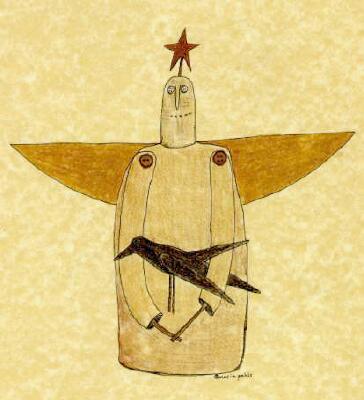
Seed Pod #068
first march 1999 issue
© Copyright 1999 Maria Pahls
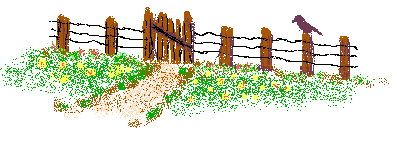
the fence post
(editor's letter)
dear friends:
"does art imitate art?"
you may have noticed the art topping off 4 of the last 5 issues is "familiar". that's because these are drawings of a few pieces from my pattern line. to me it's important to include a drawing - by hand- of the doll or item within the patterns. drawing the doll conveys more than the cover photograph, it's the way i "see" the doll- a bit more personal than a snapshot (alot more work too!).
maybe some would argue that these types of dolls not are "real" art (like the finer dolls of china), but could they argue that the drawings of the dolls are NOT art? what draws the dividing line? is a portrait of a woman more so art than the woman herself? or the bowl of fruit any less beautiful than it's rendering in oil paint? i guess it's what they mean by "art imitates life". i think that art imitates art too!
and back to the drawings... to me it's just my way of saying "my stuff IS art because i say so and because i know it inside and out -in fabric and in words and on paper with pencil and ink- here it is i've put everything into to this!" .
well if that didn't confuse you, i hope it at least provokes some great conversations and thoughts.
primitively yours,
maria pahls
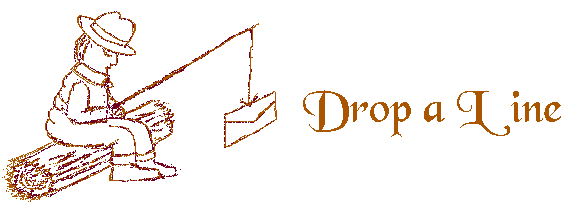
miscellaneous letters sent in by readers
pattye kent (owner of Homespun Peddler and this web site) sent a note about a customer that came into her shop:
" A customer came into the store sometime ago and we were discussing dolls. She had purchased a number of patterns over time, including some of yours Maria, but was afraid to try them because they looked too hard. I told her not to worry about that... primitive is not intended to be perfect.
Well, she came back yesterday and was proud to say that she had completed one of your "guardians of the seasons" angels and loved it. She was so thrilled to see that, even when it was not pattern perfect, it was indeed PRIMITIVE PERFECT! She's now another primitive convert." Pattye
primitive ponderings
questions asked by readers, then replied upon in later issues.
shari asked for some tips on her studio garden (#67)and cathy cullis (a true english gardener since she's from the u.k.) sent in these wonderful thoughts:
"here are some gardening ideas, following Shari's request for inspiration...
I would say a primitive-inspired garden should be quite like an artisan's garden from bygone years... it should be packed full of plants, herbs and vegetables intermingled. Grow ornamental cabbages, rosemary, lavender, sage, lettuces, squashes...
I like to choose a colour theme for flowers, what about rusts and mahoganys?? geums, sunflowers, sweet peas, iris, violas (Irish Molly is the variety to choose) and others come in these shades and they are lovely old fashioned blooms.
Tall grasses such as miscanthus may create an airy, natural feel. Rising up above your mass of vegetation and flora why not have a scare-witch with a not too scary look to her - maybe use an old black umbrella to make her skirt. Alongside birdhouses hang bird cages! (have these with door closed to prevent birds from getting trapped) line cages with moss or even plant up as you would a hanging basket.
Plant a crazy patchwork of creeping plants, especially thyme to smell so sweet in summer... Have old wheelbarrows, barrels and even old car tires planted up with herbs etc. ...
What about rusting cans overflowing with herbs, mexican-style but paint the cans with homespun-style checks?!
Also, no garden can be without a grotto or folly, a miniature-sized palace, fairy den, house,etc... built from local rocks and stones. Build this in one corner hidden from direct view and have a path leading to it with little clues on the way.
If you have trees or some other means of fixing up a hammock - then have a homespun hammock with a scarecrow sleeping in it."
new question from saundra
Does any one know the history or story behind the kitchen witch?
here's one from cheri reynolds
"I enjoy making Raggedy Ann type dolls, but quickly tire of doing the traditional raggedy-do (hair of wool yarn).
My usual technique is to thread yarn through a darning needle and after one loop put a tight anchoring stitch next to it and repeat this until the head is covered. I find my fingers get tired and sore from pulling / yanking / cursing the yarn through muslin fabric.
I am wondering what other ways are common to get that "full-head-of-hair" look ie wig making, sewing strips of loops, and securing yarn with button-twist cotton thread.
I love the look of the traditional ann, but I hate the time-consuming method. Or am I doing it wrong in the first place?"
tips & techniques
TIN CAN MAY BASKET
based on a project sent in by by toni mckorkle
wear protective eye & hand coverings while working this project. the basket is not meant for children
use a lid from a large coffee can (almost 3 lb.) and wire that is 20-24 gauge. place a quarter in the center and trace around it with a felt-tip pen. divide (but do not cut into the center circle) the lid into 8 equal sections, cutting down to the center circle. divide 7 of those 8 sections in halves...divide the 8th section into thirds to get an odd number of ribs...continue to divide each section in halves until you reach the one you divided in thirds...you should have 31 sections...
hammer the lid until smooth and flat, working from the center out...
remove felt-tip pen marks with turpentine, fold down each section to form straight ribs...
hook the wire around the base of a rib and squeeze it tight with needle nose pliers.
weave under and over the ribs, pulling the wire sufficiently tight to form a basket shape...
bind the wire around the rim of the basket by bending the tip of each rib down over it...
cut three 12" lengths of wire...
twist them together at one end with the pliers and tack them to a board...braid them together...
clip off ends neatly and feed them down through the openwork on opposite sides of the basket...
secure with solder (if desired) at the base of the ribs...
paint, instant-rust, or finish as desired. tip: crimped metal bows look nice on the handles.
one of the earliest recognized crafts and forms of folk art is basket making. |
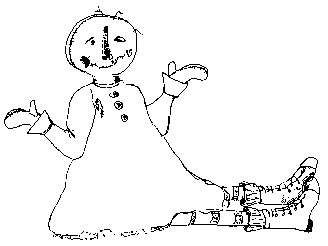
WHO'S IT?
WHAT'S IT?
bird-spit a wrought iron steel device with projecting prongs used for holding a bird for roasting near hearth.
butterfly table a small drop leaf table with leaf supports shaped similar to a butterfly's wing.
rabbit ear term applied to the upright end of chair posts which are flattened near the end of front side frequently found on ladder back chairs.
ARTIST INTERVIEW
with QUILTER
PAT SLOAN
another talented person i am fortunate to correspond with is pat sloan! pat is always very enthusiastic and ready to lend a hand when i need one. i always enjoy seeing the beautiful creations she comes up with in her medium of choice, quilting.
seed pod: pat, please tell us about how you began quilting?
pat: "It is all my friend Gwyn's fault. I thought quilting was too precise and would take too long to do, but she was sure I would like it, She encouraged me to sign up for a beginners class-I was crazy about it right away! That was over 10 years ago.
I have sewn clothes since I was a kid and I have always loved fabric. Over time I really wanted to applique, but I thought that was too hard. Once I started to do applique, and found out I love that even more than piecing!! Applique has given me the freedom to do more folk art type designs.
It is really the fabric that is the big pull for me in quilting. I love pattern and design, the feel of fabric and way it works into a piece."
seed pod: what style do you typically work in?
pat: "I think I work in a traditional/folk art style. I have ALWAYS been a huge fan of Red Wagon, Brannock and Patek styles. I also love all the Kindred Spirits stuff. I try to do my designs based off traditional folk art, which is a little more child like and leans towards primitive."
seed pod: where do you get your inspiration for designs?
pat: "Old quilts, gardening books and country/primitive decorating magazine/books. One of my magazine series is based off a ski I saw in the window of a shop! Sometimes things just hit. I often take elements from several places and put them into one design.
I'm also inspired by stories of how artists think and work. I'm really drawn to how an artist thinks about their work. Whenever I can, I read or watch stories that relate to artists (and musicians). "
seed pod: on average what size are the quilts you make, how long do they usually take?
pat: "I do mostly wall hanging size, because I am so impatient I want to get it done! I also have so many ideas I want to try that doing big quilts would take time away. I do a wall hanging in about a week(for those who don't quilt this is kind of fast or so my friends tell me!). I'm VERY focused when I work, so it goes quickly".
seed pod: do you collect quilts, what are your favorite types?
pat: "I have a very modest quilt collection. I have 2 family utility quilts from my in-laws. (No quilt makers in my family). I also have a few other folky quilts, one is baskets and the other is a string quilt. I really like pieces that were made to use up scraps and might be considered odd. I often wonder what the quilt maker was thinking when she did it. I have also collected some old blocks that I made into quilts. I think the maker would be very happy that something was done with them!! (I finished her UFO)"
seed pod: how many patterns have you designed & tell us about your exciting news with indygo junction.
pat: "I have 13 patterns, with more coming out on a regular basis I started publishing my patterns about Feb of 1998. I went to the wholesale quilt market in October of 1998 and had wonderful feedback about my quilts. This is where I meet the owner of Indygo Junction. She told me to call her if I ever wanted someone to publish for me. After market I took a look at what I was doing and what I wanted to be doing and decided to concentrate on designing. I approached Indygo and they were excited to add me to their company. I feel it will be a wonderful adventure. Indygo is very professional, has a great name that people know, and they do lots of marketing. A perfect place for my patterns to be! "
I am also excited to have my own ~ called 'Pat Sloan & Co'. I hope everyone will enjoy my new pattern line which is due out in fall of 2000.
seed pod: tell us a little about you, pat:
pat: "My biggest accomplishment in my personal life is having married my best friend and we will be married for 19 years in June! My husband is wonderful and supportive, I'm very lucky because not only is he great but I also have the best in-laws in the world! My mother-in-law Madge is my best friend too.
I also do a little gardening, I bake (my favorite form of cooking), and I LOVE DOGS (the best animal there is!)."
seed pod: how about some pointers for someone interested in starting a primitive quilt?
pat: "The basic elements include color, pattern,fabric and size...
Color - Since this audience knows about the colors of primitive work, stay with them for quilts. This would be toned down, or muddy, colors. I love mellow yellows/golds used with reds and navys. Then add in some other things for a surprise,pumpkin,blacks/beige.
Pattern-If you want to piece, pick any traditional pattern. With your colors it will look old. If you want to applique go for larger shapes, things that are less detailed. You can design your own or work on a published pattern.
Fabric-My favorite subject! Mix flannels in with your cottons. Use quality fabric which will give your piece a long life, and add in some that you tea dye or over dye yourself. The technique of using an over dye can completely change the fabric. I would avoid novelty prints because they will date your project in the future. Select fabrics that are time honored-plaids, small prints & florals. The shirting fabrics tea or over dye really nicely.
Size- Do something small so you can work with the colors, fabrics and shapes. "
Bags & Bows
1-800-225-8155
full line of bags for all product lines including those for candles
vermont wind up toys
whirlygigs by russell snow
limited edition historical and whimsical whirlygigs
8340 ripley rd
waterbury ctr, vt 05677
brochure $1
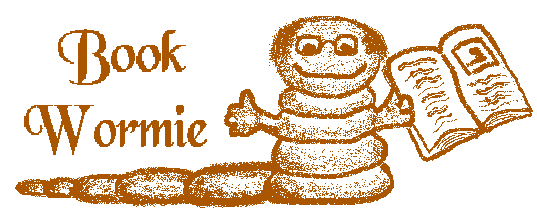
book reviews
&
books of interest
the decorative egg book
deborah schneebeli-morrell
isbn 1 859673406
lorenz books 1997 anness publishing
includes many interesting techniques including leaf stencils, scratched onion skin eggs,african resist,gilded eggs,sgraffito (scratching),scherenschnitte(applying the cut paper to the egg) to name a few.
country living collectibles: rabbits
by jessie walker and the editors of country living magazine.
hearst books 1996
hardcover
a country living collectibles book, inspired by the easter holiday the antique papier-mache rabbit candy container collection of enid hubbard, a northern california collector.
collectable rabbits
soft cover
available through schiffer publishing
(610) 593-1777
decorated eggs (milner craft series)
by ruby m. brown
paperback - 104 pages (august 1997)
sterling publications
isbn: 1863511814
decorating eggs : exquisite designs with wax & dye
by jane pollak
hardcover (august 1996)
sterling publications
isbn: 0806994207
american dolls : from the brooklyn children's museum
by brooklyn children's museum, susan feuer (editor)
hardcover november 1995
andrews mcmeel publishing
isbn:0836231279
the complete book of birdhouse construction for woodworkers
scott d. campbell
dover publications, inc.
0486-24407-5
bird egg feather nest
maryjo koch
swans island book
0-7651-0762-7

web sites of members & other sites of interest
pat sloan's site
http://www.QuiltersHome.com
email: pat@patsloan.com
you can send a sase to pat sloan at:
12444 oliver cromwell dr.
dept pp
herndon, va 20171
find missing fabrics at:
http://www.missingfabrics.com/index.htm
cathy cullis, our talented gardener in residence, has a web site and newsletter:
http://www.herb-newsletter.bigstep.com
ukrainian easter eggs (pysanky)
heres a site about how to make ukrainian easter eggs (pysanky)
http://www3.ns.sympatico.ca/amorash/ukregg.html
carpatho-rusyn knowledge base: an excerpt on russian folk art including the egg techniques namely Lemko pysanky
http://www.carpatho-rusyn.org/rich/folk.htm
baskets etc. a basket site
http://www.bright.net/~basketc/
cletic page
http://www.geocities.com/Area51/Cavern/1863/celtic.html
prose
A great wind is blowing, and that gives you either imagination or a headache.
Catherine II
The winds of grace blow all the time. All we need to do is set our sails.
Ramakrishna
Who has seen the wind?
Neither you nor I.
But when the trees bow down their heads.
The wind is passing by.
Christina Rossetti
Worldly fame is but a breath of wind that blows now this way, and now that, and changes name as it changes direction.
Dante
A Kite
I often sit and wish that I
Could be a kite up in the sky,
And ride upon the breeze and go
Whichever way I chanced to blow
Author Unknown
Be like the bird, who
Halting in his flight
On limb too slight
Feels it give way beneath him,
Yet sings
Knowing he hath wings.
Victor Hugo
The March wind roars
Like a lion in the sky,
And makes us shiver
As he passes by.
When winds are soft,
And the days are warm and clear,
Just like a gentle lamb,
Then spring is here.
Author Unknown
on the first of march
the crows begin to search;
by the first of may
they've all flown away,
coming greedy back again
with october's wind
and rain
Author Unknown
the north wind doth blow,
and we shall have snow,
and what will poor robin do then,
poor thing?
he'll sit in a barn,
and keep himself warm,
and hide his head under his wing,
poor thing.
God gives every bird it's food,
But he does not throw it into it's nest.
warm and clear,
Just like a gentle lamb,
Then spring is here.
Author Unknown

|
|
All rights reserved. No part of this newsletter may be reproduced without written permission from the publisher, except by a reviewer who may quote brief passages in a review with appropriate credits; nor may any part of this newsletter be reproduced, stored in a retrieval system, or transmitted in any form or by any means -- electronic, mechanical, photo- copying, recording, or other -- without written permission from the publisher.
 HOME PAGE
HOME PAGE